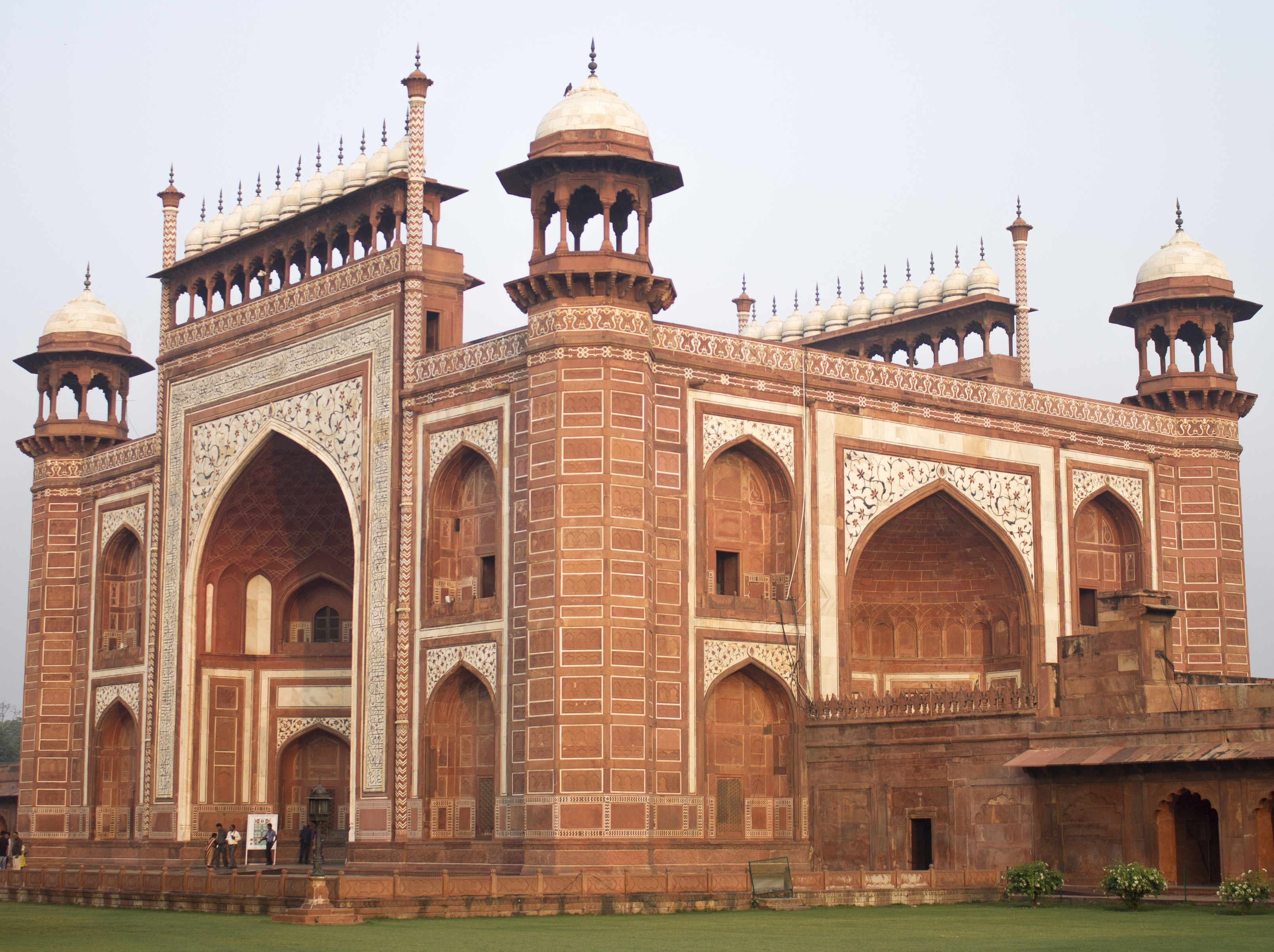A teardrop in the face of eternity
Day 4: 3rd November, 2015
What could possibly ‘force’ me to wake up at 5 in the morning?
A big, white, marble structure.
I got ready by 5:40. We left at 6. We reached the point upto which cars are allowed within 5 minutes (yes, the kilometre-distance-from-the-Mahal-fact had turned out to be true).
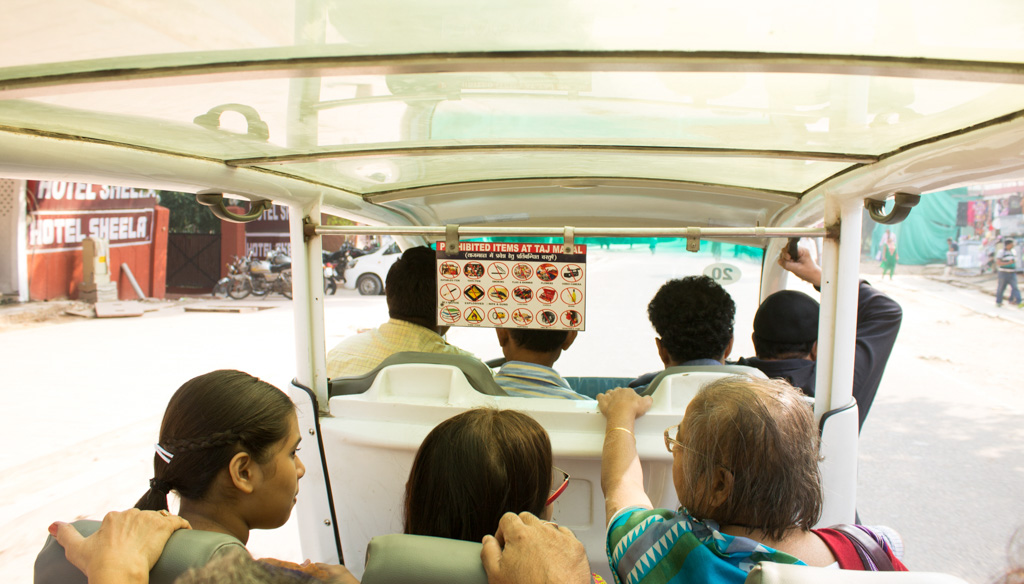
I had a Safari inside my camera bag which I had to gobble down since eatables are not allowed inside (and I had forgotten to take the chocolate out despite having this knowledge beforehand).
Duda took a wheel-chair, and we entered the premises of the Mahal through the Eastern gate.
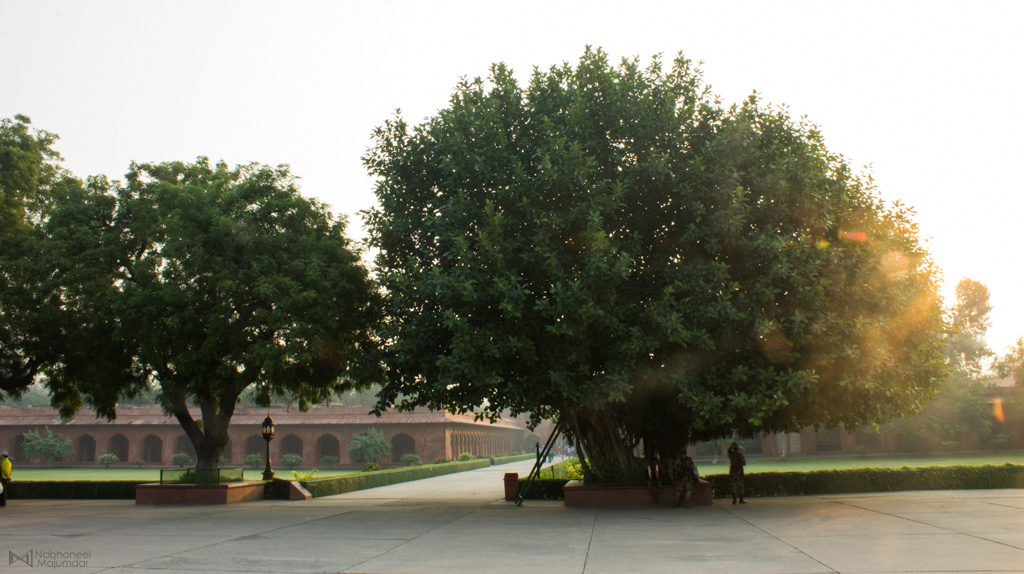
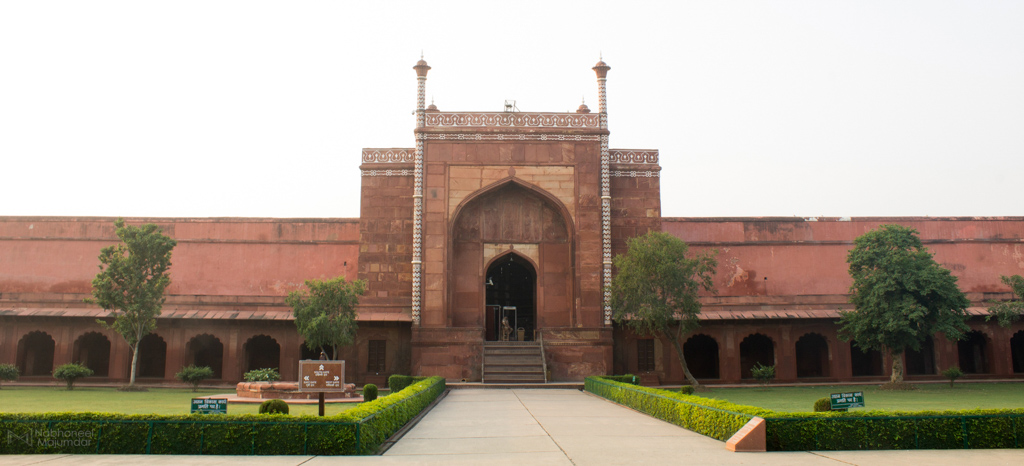
All Mughal monuments are architectural wonders. The Taj Mahal is the best example. Even people like me who have no idea about architecture will gape at each component inside its premises.

There is a line on the ground that starts from the Southern gate and passes through the one in the above photograph and continues till the small fountains that appear once you pass through this gate. If you stand on this line, you’ll notice how perfectly symmetrical the entire compound is.
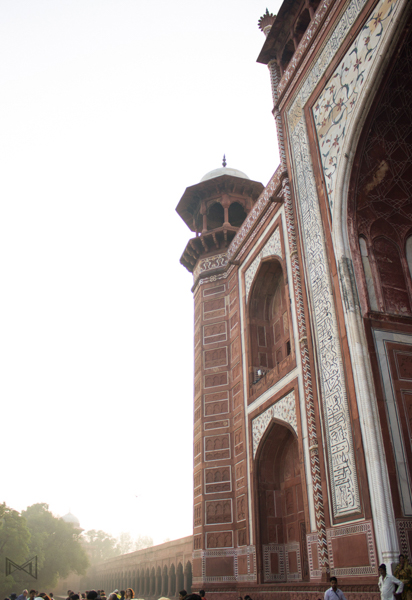
[The workers and engineers in those days obviously had no advanced digital measuring devices]
Conversation with our guide:
Do you know how many years it took to build the entire Mahal?
No.
22 years. How do we know? Observe the domes at the top.
Each dome signifies a year. The workers made them to keep track.
The following photograph has been clicked by almost everyone who has visited the Taj Mahal, and will continue to be photographed. It’s probably one of the most cliched shots. However, even with that knowledge, the urge to photograph it will find you.
Why?
Not everything is seen in photographs. The grandeur of this monumental monument will always be awe-inspiring.
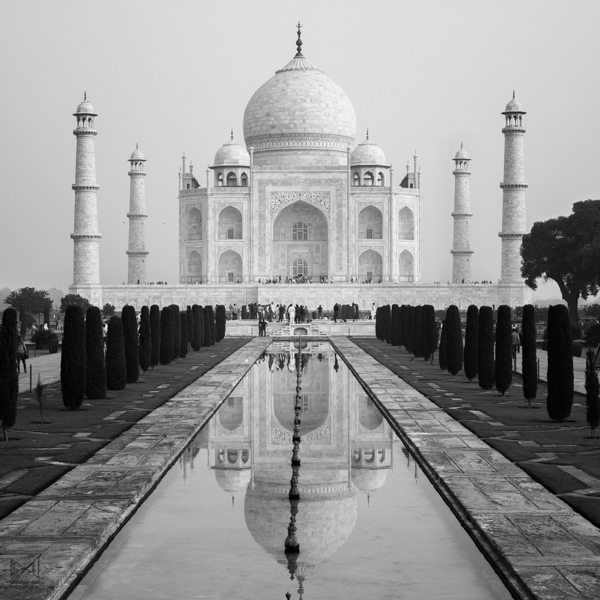
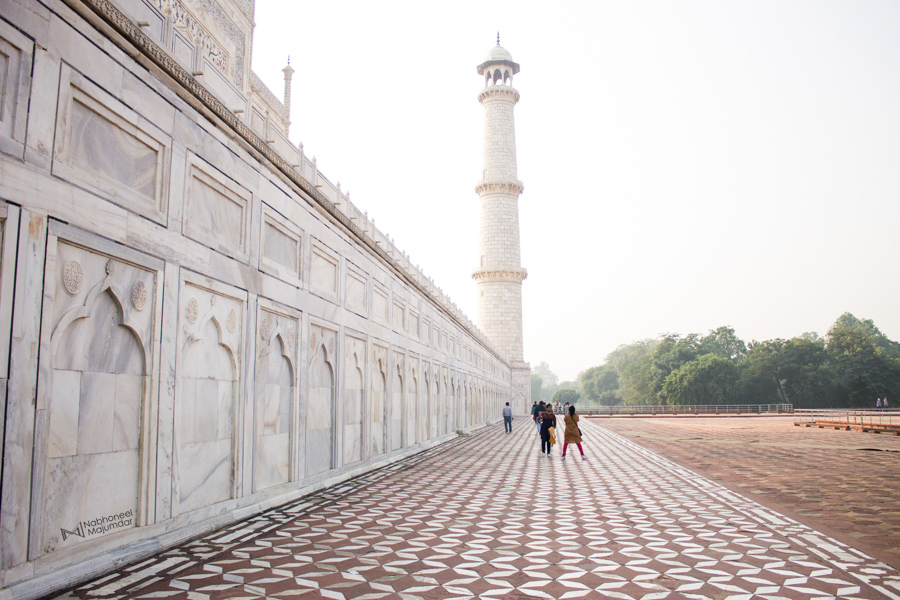
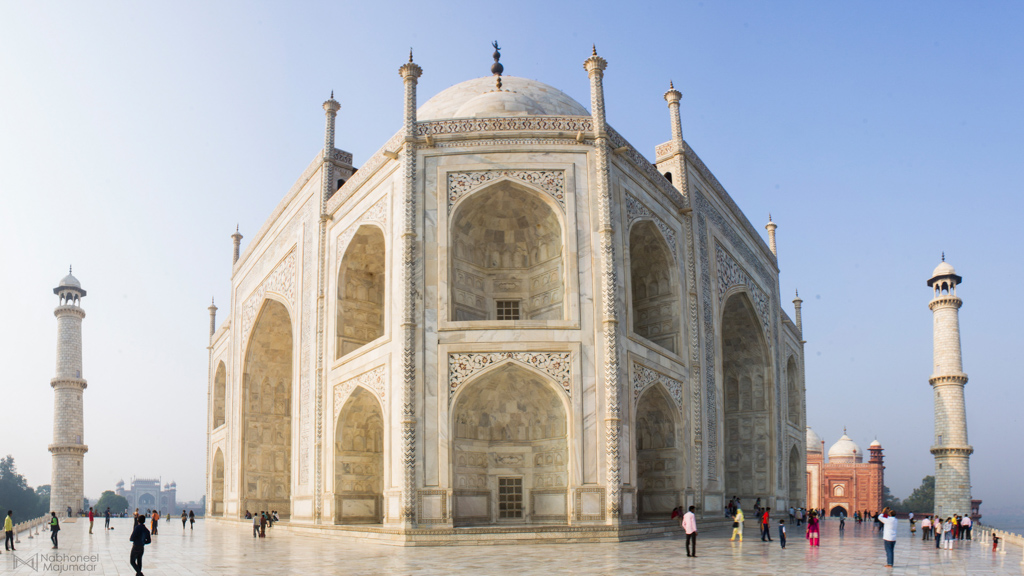
Photography is prohibited once you step inside the ‘building’. Since I did not possess my Redmi Note during the trip (I had no idea that it would be returned to me by the Kolkata Police at that time), I used my father’s phone.
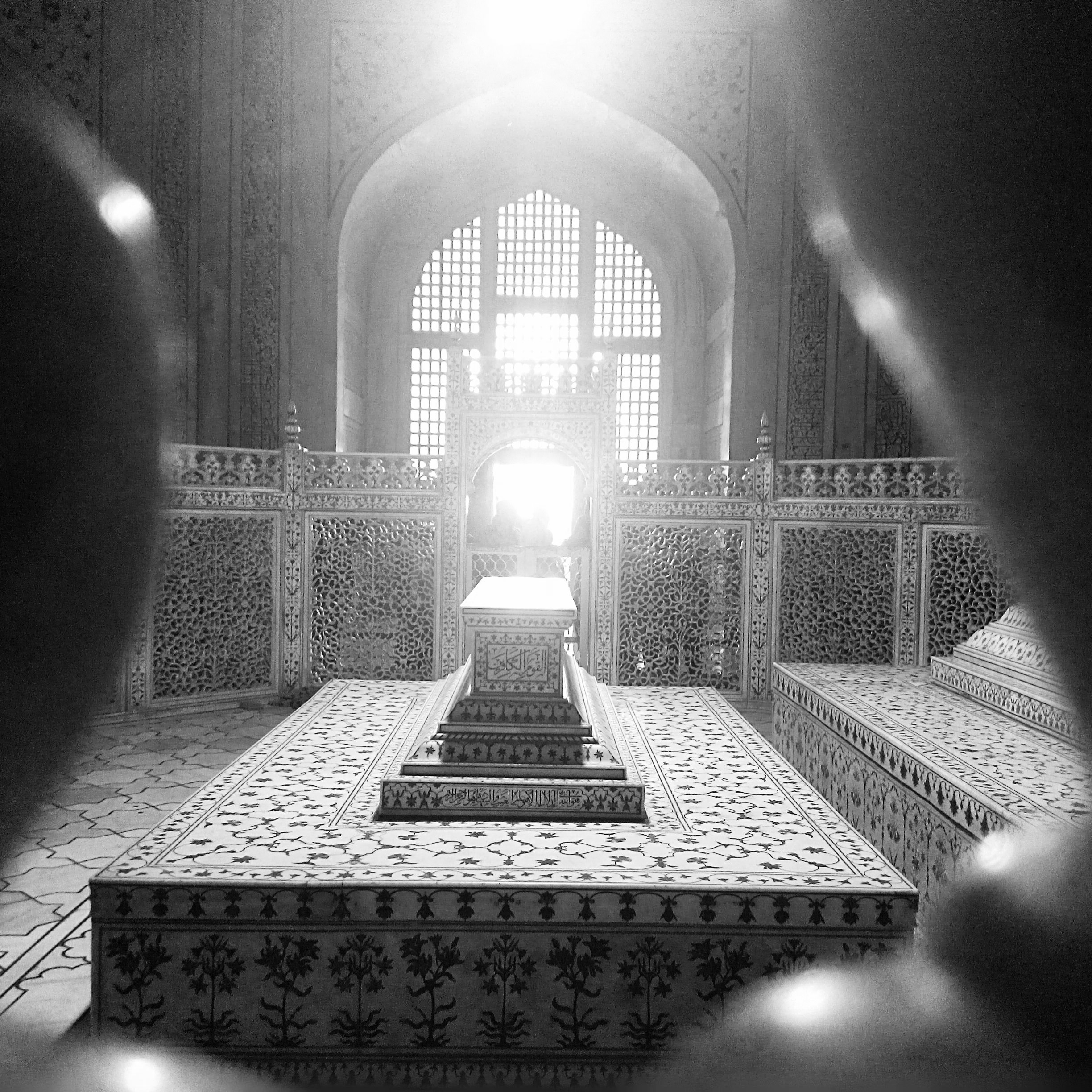
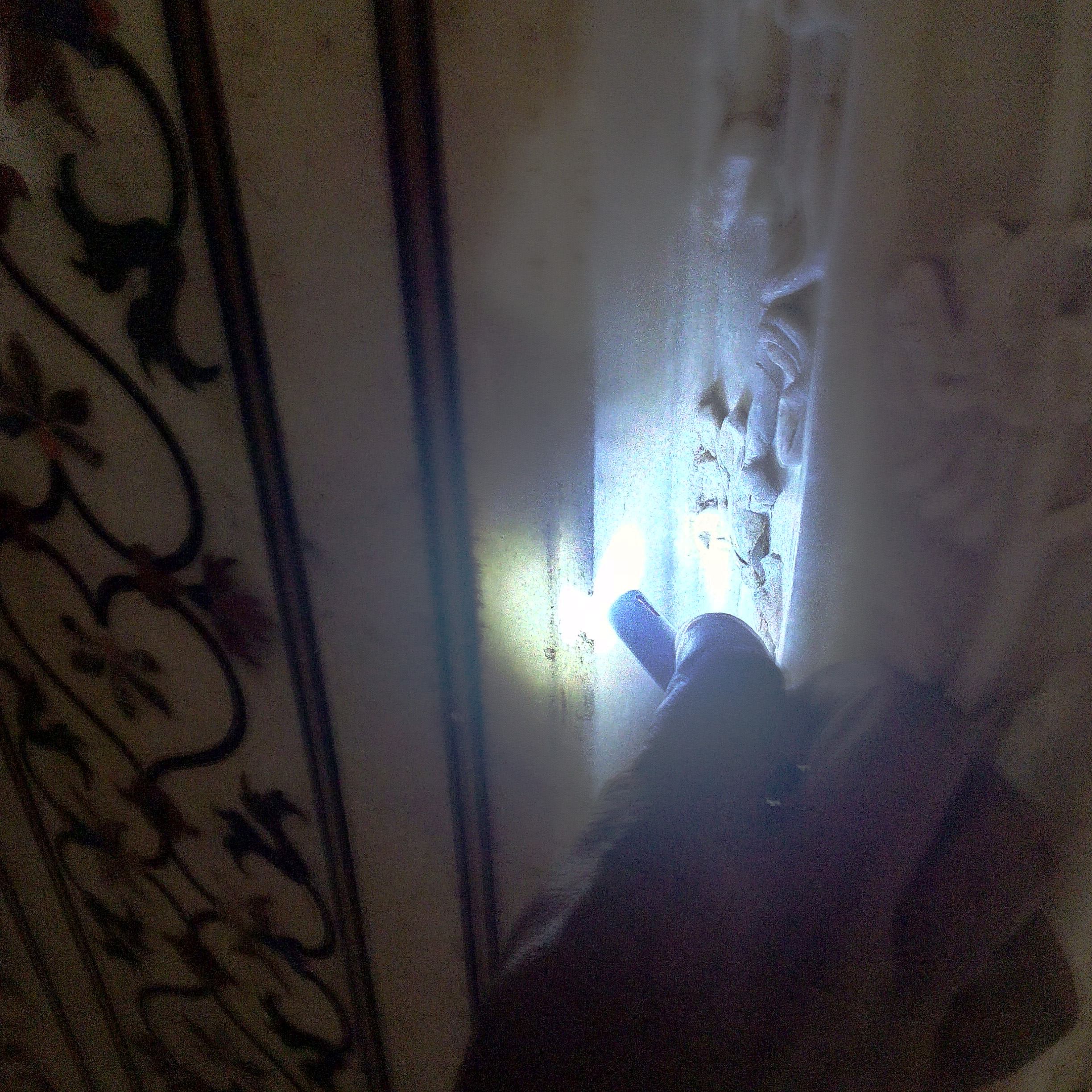
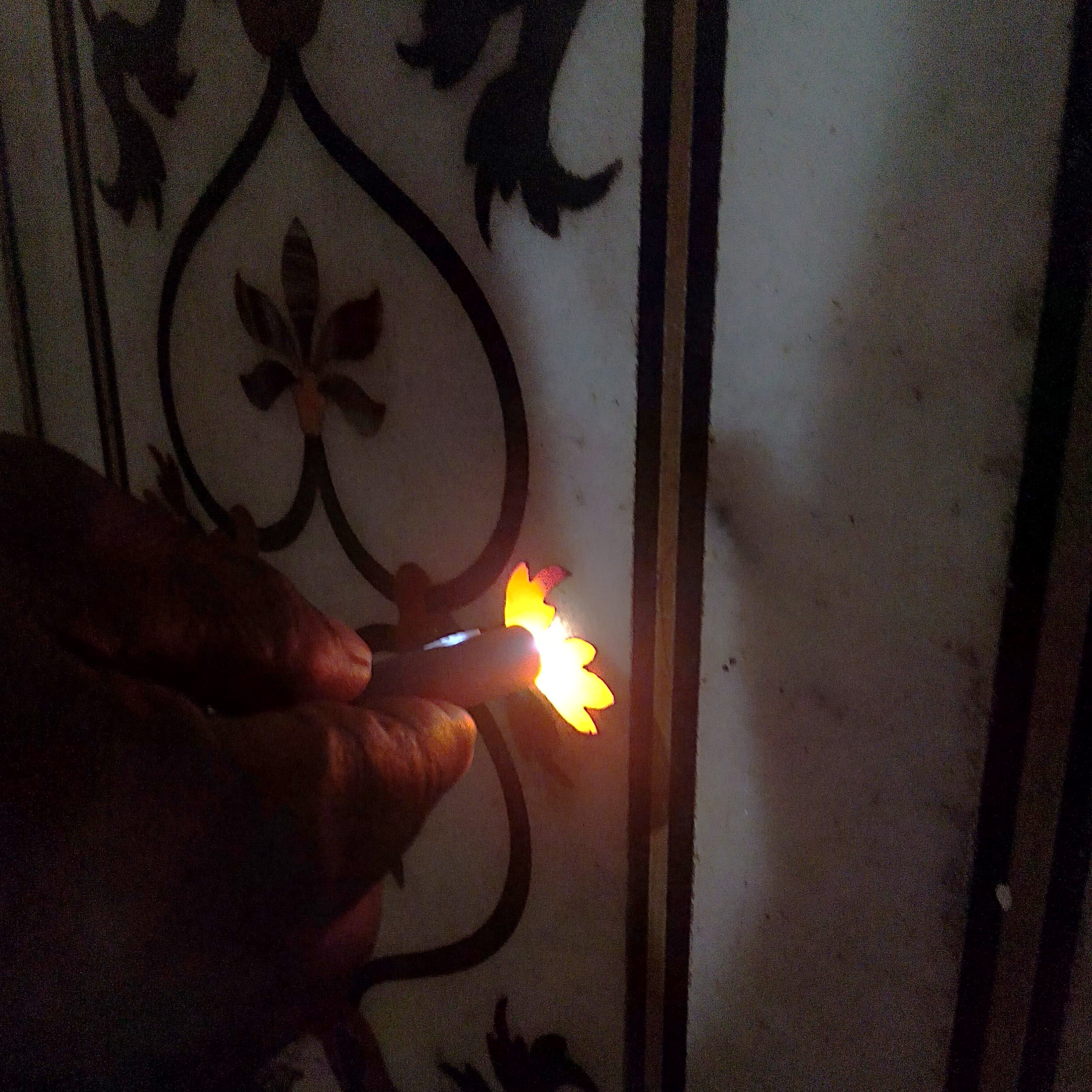
There are specific stones which glow specifically when the moonlight hits them (there are stones which glow under the sun’s light as well). Our guide used a white LED torch to show us how an entire piece of stone got illuminated by the small source.
(Probable) Facts:
- There are flowers inside the mausoleum which have been cut from single pieces of stones.
- Then there are flowers which contain 64 pieces arranged in complex structures!
- Inscriptions can be found on the walls of the Mahal, which mostly comprise of text from the holy Quran.
- As one enters the main mausoleum, the tone of the inscritptions changes from paradisiacal to those of the Doomsday. Inside the mausoleum, the tone gradually reverses.
- Mumtaz Mahal’s favorite sari’s design is embedded into the fence surrounding the tomb.
- There are 16 gardens and 53 fountains – together they signify the year on which the construction of the Taj Mahal was completed.
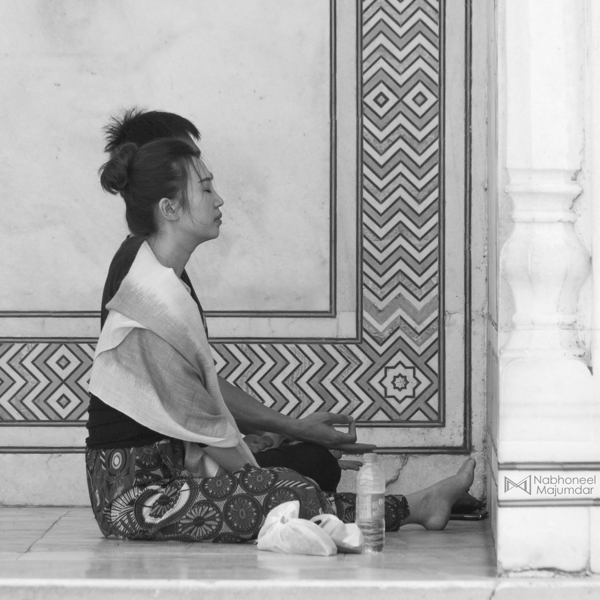

A vacation brings a sea change in human beings. It cures people. Doctors often advise their patients to go on a small trip to the mountains, or the seaside.
Duda was our primary objective in this entire trip. She had just recovered from a severe illness and we were always prepared to rush back to Kolkata in case she fell sick.
At Taj Mahal, she climbed the stairs and roamed around the entire mausoleum. Illnesses, weaknesses, worries – everything had faded away. The extremely active, office going lady had returned and she posed for several photographs whenever I asked her to!
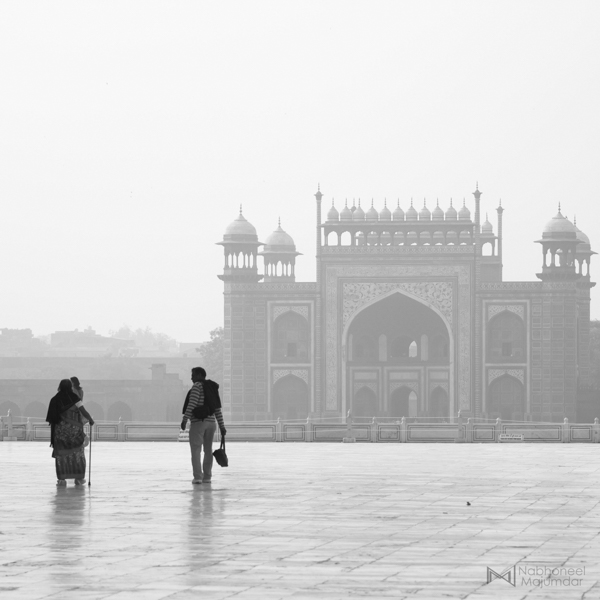
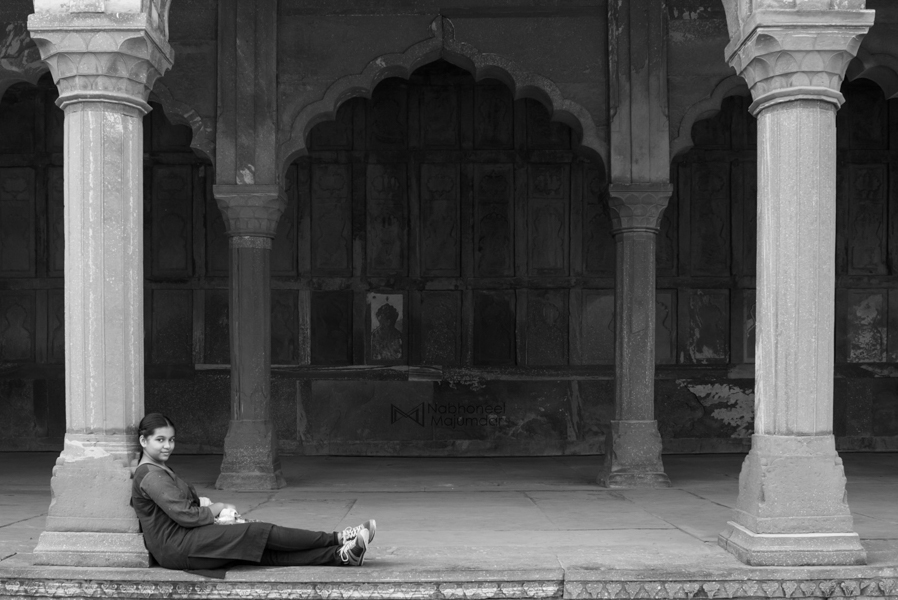
As I said at the beginning of this post, this wasn’t the first time we visited the Taj. However, last time I hadn’t learnt much.
This time, our guide, our hour of visit, having Duda and Gunja as active ‘components’, the location of our hotel and personally, my camera, made this visit marvellous!
And we realised, to learn more about the Mahal, to take more photographs, we’d need to visit it at different times, especially on a full moon’s night (people say it’s magical).
The following day we were supposed to drive to Ranthambore, but we decided to visit the Mehtab Bag before leaving Agra, albeit not at the perfect time (the best time to visit the garden of Babur is during sunrise or before sunset).
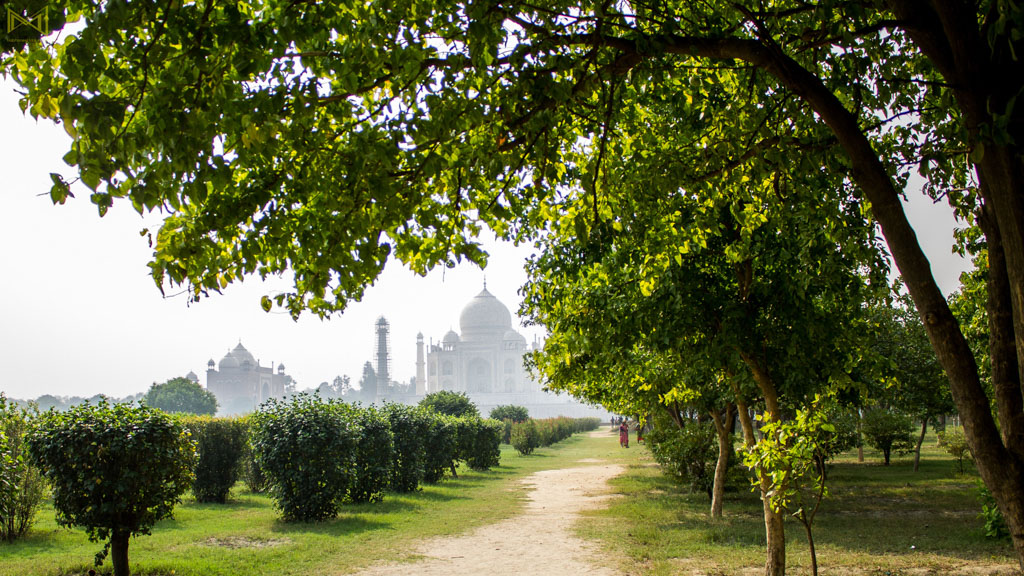
Babur, the first Mughal emperor came from a beautiful land filled with greenery – Kabul – and India was dry. After the exhaustion of the wars he had fought, he built this garden as a place of relief.

Although a story revolves around this, this is actually a myth. One of the websites about Taj Mahal says:
Modern excavations carried out in the 1990s found that they were discolored white stones that had turned black.
However, Mehtab Bagh is also a place from where you can get a panoramic view of the Taj Mahal, the Mosque and the Jawab.
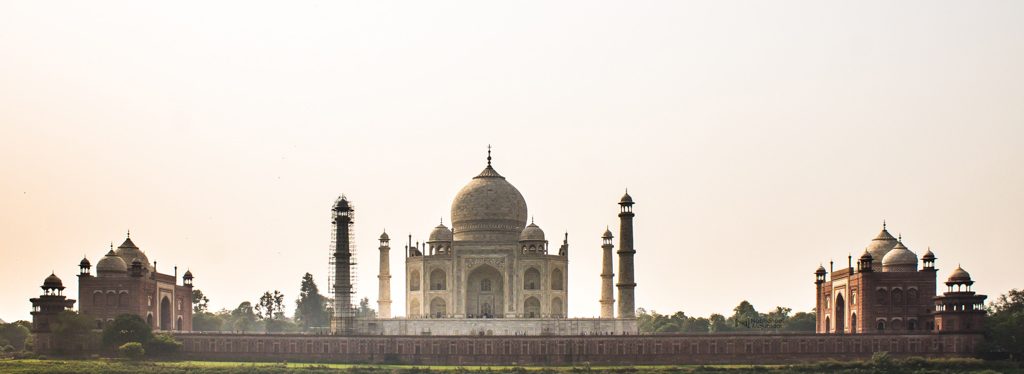
We have already planned to visit this garden (and the Mahal) again, at the proper time, to watch the Mahal with a golden backdrop.
Pipi, thank you for the camera kit! The camera was a constant companion throughout this trip (and an amazing companion).

